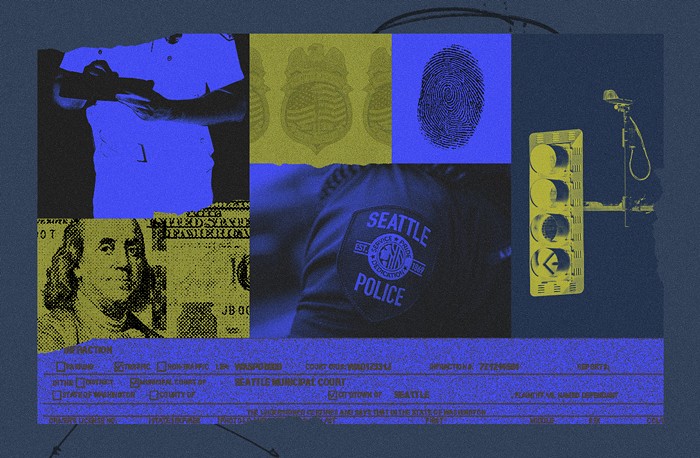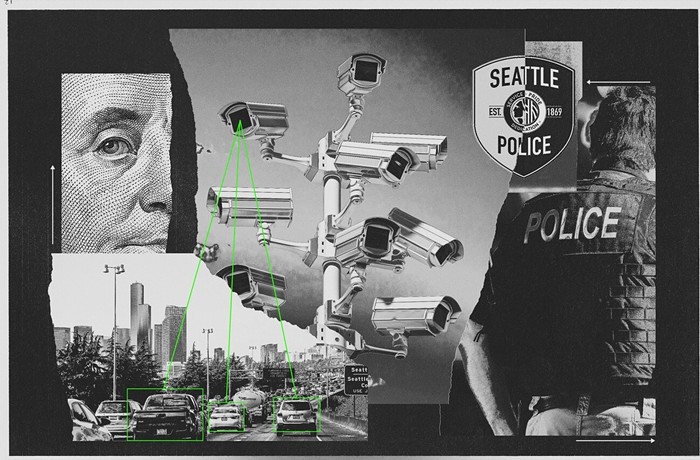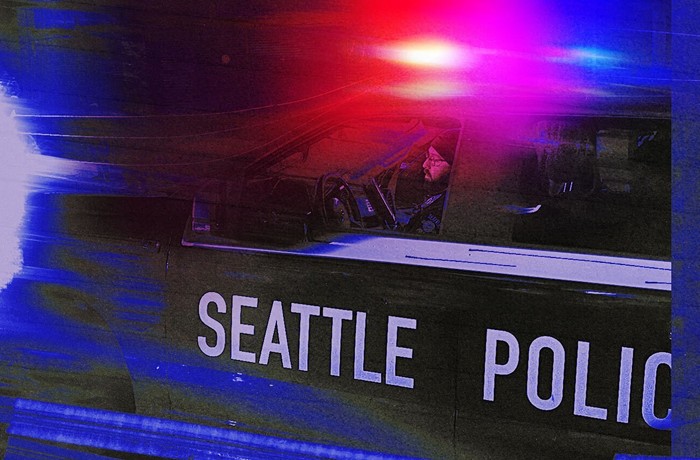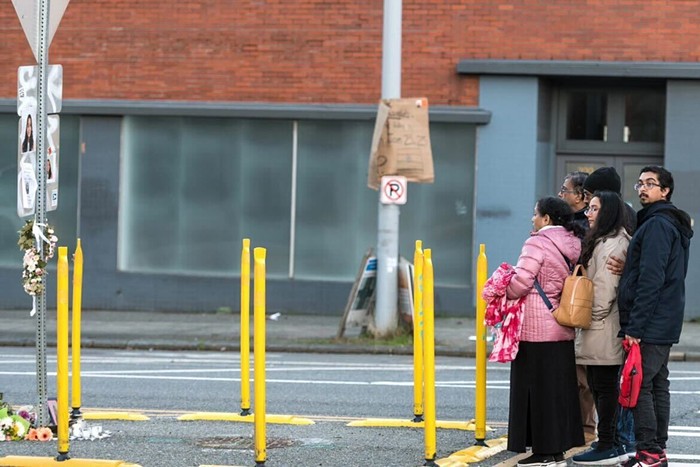
As everyone knows, the lip sync is the pinnacle of art.
From Jimmy Fallon’s popular The Tonight Show segment-turned-actual-network-TV-show, what can be chalked up to a Hail Mary pass on RuPaul’s Drag Race, to Mariah Carey’s slip-up on New Year’s Eve, the lip sync has influenced the most important parts of culture.
Art evolves and ultimately, just like everything, it dies. In its most recent incarnation, the lip sync has been adopted by cops. Though it signals a decline in all meanings of the word, the Cop Lip Sync has become an art in-and-of itself and must—MUST!—be analyzed.
Cops across the country are taking their own crack at the art of the Cop Lip Sync. Egged on by other precincts, the Seattle Police Department was recently parading down the streets of Belltown, mouthing their lips around Macklemore’s lyrical genius, and filming a lip sync challenge extravaganza. What torture are we in for?
Here you go, @SeattlePD! You stepped up to the challenge and were awesome today. So proud of you. Thanks for keeping us safe in Belltown and featuring our neighborhood. @MayorJenny #DowntownLipSync pic.twitter.com/PG1qehgIeY
— All Things Fried Guy (@atf_guy) July 18, 2018
Through recent viral trends not unlike 2014’s ALS Ice Bucket Challenge (minus, of course, the actual philanthropic purpose) the lip sync has been reborn into a terrifying new, and perhaps final, form: Cop Lip Sync Challenges.
The Cop Lip Sync Challenge encourages creativity and nourishes a competitive spirit. It’s also an opportunity for police departments to capitalize on some good viral PR for a change. They’re a little too familiar with videos of them going viral for not-so-good (read: atrocious) reasons.
No one asked for this pseudo-renaissance, but it is a renaissance nonetheless.
Its origin is hard to trace. (How do you pinpoint the decline of culture entirely?) Many say it started in Texas, where Bexar County Sheriff's Deputy Alexander Mena Snapchatted a video of him mouthing the words to "Fuiste Mala" by the Kumbia Kings.
The Bexar County Sheriff’s Department posted the video, and it was a public-relations goldmine. Precincts around Texas joined in, they put their own unique spin on their lip syncs. But, they were mostly filmed with one or two officers in the cab of a police car. The genre could only improve.
In a stroke of genius, the City of Monroe Police Department in Georgia filmed a full-fledged ensemble lip sync of Bruno Mars’ “Uptown Funk.” It spread, like a forest fire or syphilis, and precincts nationwide took it upon themselves to create their own masterpieces.
The trend became a movement which soon became a hashtag: #LipSyncChallenge. The hashtag was dominated by small town, local agencies with people like your average Linda, Jody, and Roberta commenting “god bless you for what you do” throwing in an “OMG” or an “Officer so-and-so is a cutie.”
Norfolk, Virginia threw their hat into the ring and currently has the most-viewed video at about 30 million views. In the video — another “Uptown Funk” rendition — they challenged the Seattle Police Department to make its own version.
After Norfolk, the gauntlet was thrown. Seattle immediately set to work — they even posted a challenge-accepted video. The city of Seattle, police departments around the country, and the world are watching, obviously ripe with anticipation.
But, extensive research has revealed that this is not the true origin story of the Cop Lip Sync. As pointed out by a very proud Tampa Bay Police Department, back in 2012 TPD urged the community to “Connect with Your Cops” with a lip sync of Carly Rae Jepsen’s inimitable “Call Me Maybe.”
That seems like a one-off. It was a dead-end for the movement until 2016’s “Running Man Challenge” — a dance fad where people do the running man dance to 1990’s hit “My Boo” by Ghost Town DJs. A police department in New Zealand made the first police-themed Running Man Challenge, filling a void the world didn't know it had.
They challenged police departments around the world — including the NYPD who delivered. The trend caught fire.
Then in late 2016, with a stroke of innovation that would alter the form forever — arguably responsible for the moment we are living in today — the Apple Valley Police Department in Minnesota transformed the Running Man Challenge into a lip sync.
An important part of this video that cannot be ignored: its preamble. The videos created during this era of Cop Lip Sync Challenges usually feature a lengthy narrative section in the beginning where the police officers address the audience. They beckon us into their police state. It is not enough to launch directly into a lip sync for the pioneers of this unforgiveable artform. They must introduce us, with their limited acting chops, to their creative sides. After 30 seconds to a minute of stiff-as-a-board dialogue or uncomfortable fourth-wall-breaking, the lip sync can begin. It is the ritual that occurs before the slaughter.
Now, in its contemporary era, the form has continued to morph. They have forsaken the preamble in favor of the straight-up music video.
Others go down the medley route. The San Francisco Police Department chose this version and, frankly, it’s just no good. There’s a lack of focus, of coherency, of theme.
Or, getting more creative, some police departments have mashed up the lip sync with parody. In this one by Middletown Police Department in Ohio, the video has a narrative.
Here, we see an exemplary usage of one of the common motifs of the Cop Lip Sync Challenge: donuts. Pay attention in your studies, the references may be subtle but there are often donut threads to be followed throughout many videos. Another motif is using either Justin Timberlake’s “Can’t Stop This Feeling” or Pharrell’s “Happy.” Sometimes, the lip sync videos incorporate both.
Regardless of its lurid history, the Cop Lip Sync is a piece of art history that will not be forgotten. Whether it is good, bad, or the true signal of humanity’s inevitable decline is subjective. What matters most in the coming days is which path of Cop Lip Sync history SPD's lip sync will follow, and whether they will incorporate the six years of their department's court-ordered reforms into their wild two-stepping.



















